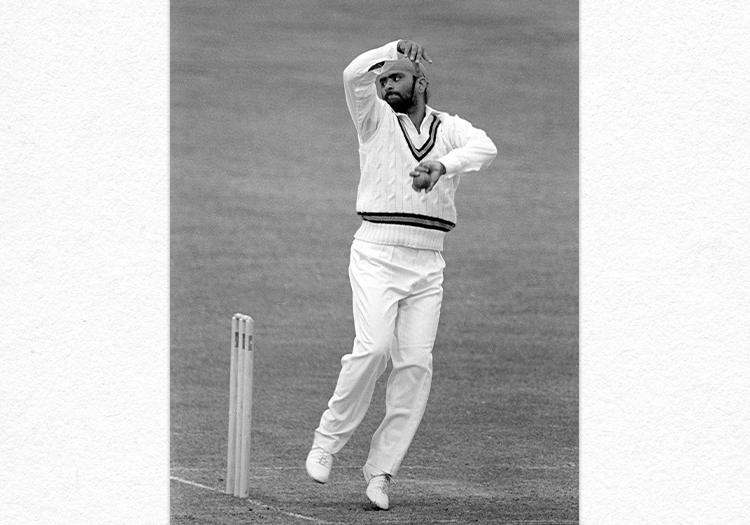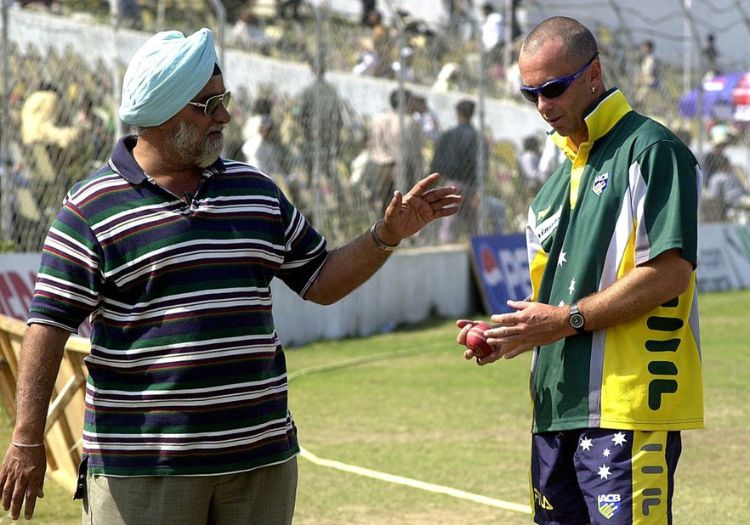GIDEON HAIGH: I have a favourite memory of Bishan Bedi at Lord's, a decade after he retired, when he was, briefly and improbably, India's coach...


This article was originally published in the July 2020 edition of The Cricketer magazine
I have a favourite memory of Bishan Bedi at Lord's, a decade after he retired, when he was, briefly and improbably, India's coach.
He was leaving the Nursery with two of his younger charges when, it appeared, he challenged them to a running race to the pavilion. Never an athlete, Bedi's figure had grown more generous, so he introduced a handicap: he would run across the middle of the ground, while the players skirted the boundary.
It would not be possible now given the ludicrous preening and strutting around the square before a day's play, but it brought great pleasure to the waiting spectators, who cheered Bedi's slow but steady progress all the way, until he arrived at the gate just ahead of his players.
It was typical playful Bedi, making a joke of his physique, but a contest all the same. Even during his playing career in an era of all shapes and sizes, Bedi was noted for moving with a certain reluctance, as if in deference to his trademark patka. He was a clumsy fielder, a hit-and-hope batsman. His run-up was hardly that, more a cursory toddle.

Bishan Bedi has died at the age of 77 [Getty Images]
But then, at the last instant, something happened: like the aviator poet he 'slipped the surly bonds of earth', floated through the crease and propelled the ball with gentle cunning.
Patrick Eagar's 1974 photograph (the main image of this article), also taken at Lord's, captures that tremor of transformation, when the earthbound man became the airborne bowler.
The left boot's outer edge is a concession to gravity; it's as though the next frame might show Bedi floating away. In fact, reversing the body's backward tilt will provide the momentum necessary to send the delivery on its way.
There will be no more hint of effort than that. It will be as apparently artless as a child letting go a balloon.
The menace will lie in the tiny, concealed variations imparted by wrist and hand, the unwavering accuracy, and the underlying competitiveness, for Tony Lewis called Bedi a Lillee among slow bowlers.
He attacked, always attacked. He welcomed aggressive batsmen, wished always to take on the best. He favoured bold fields, scorning boundary riders in favour of close catchers. He never tied an end up – only opponents.

Bedi was a pivotal figure in the history of spin bowling [Getty Images]
Bedi's, ironically, was the era in which pace established its long and violent ascendancy. In 1975, the Sunday Times Magazine published a remarkable pictorial spread reproducing frame-by-frame photographic strips of four of the world's fastest bowlers – Lillee, Jeff Thomson, Bob Willis and Chris Old.
To accentuate their velocity, these were shown alongside a ball from Bedi, naturally using up thrice as many frames. But he wasn't about to start hurrying. He carried on slowing the game to his own speed, while paradoxically leaving the batsman less time to play by injecting so much time to think.
'Of all the slow bowlers I batted against,' noted Mike Brearley, 'none required you to commit yourself later than Bedi did.' That glimpse of him at Lord's in 1990 I now realise was also a kind of metaphor for his bowling. The greatest back themselves to win by setting terms that suit them.
To subscribe to The Cricketer Magazine, go to www.thecricketer.com/subscribe
Subscribe to The Cricketer for exclusive content every day: The inside track on England's Test tour with George Dobell in Pakistan, award-winning analysis, breaking news and interviews and the only place for in-depth county coverage all year round. Plus: An ad-free app experience at your fingertips. Subscribe to thecricketer.com today for just £1.